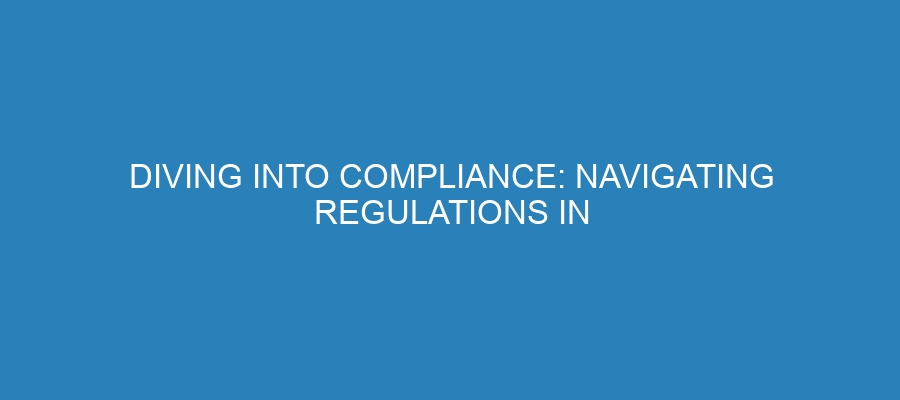Navigating the murky waters of high-risk payment processing can feel like embarking on a thrilling but treacherous journey. One day, you’re riding the waves of growth and innovation; the next, you’re confronted with complex regulations that threaten to sink your business. With the payment processing landscape evolving rapidly, understanding compliance may very well be the captain’s wheel steering you away from potential disasters. Let’s dive into the intricacies of navigating these regulations, why they matter, and how you can ensure your business floats above the high-risk storm.
What Makes payment processing High-Risk?
Not all businesses face the same levels of scrutiny when it comes to regulations. High-risk payment processing typically refers to industries more prone to chargebacks, fraud, or regulatory scrutiny. Think of businesses in sectors like adult entertainment, gambling, or subscription services. These industries face heightened vigilance from financial institutions and regulatory bodies. But why are they tagged as high-risk?
- High Chargeback Rates: Industries like travel or online dating see significant chargebacks, which can be a red flag to banks.
- Potential for Fraud: More cash changes hands in high-risk industries, inviting considerable opportunity for fraudulent activities.
- Regulatory Scrutiny: Many high-risk businesses are governed by strict regulations, which banks realize could expose them to financial liability.
Understanding your industry’s risk level is essential, as it informs the compliance regulations you’ll need to adhere to.
The Importance of Compliance
Compliance may sound like a tedious chore, but don’t overlook its critical role in your business. It’s what separates successful payment processors from those whose operations come crashing down due to fraud or legal troubles. Here are the key reasons why compliance is vital:
Legal Protection
Failure to comply can lead to costly penalties, legal fees, or even the closure of your business. The legal ramifications can impact not just your finances but your reputation as well.
Building Trust
Demonstrating compliance builds customer trust. Buyers are more likely to engage with a business that prioritizes their data protection and adheres to industry regulations.
Market Access
Proper compliance opens doors. Many payment processors and banks won’t work with businesses that don’t meet specific compliance requirements. This limitation can impact your growth potential.
Increased Profitability
Ultimately, businesses that adhere to compliance guidelines are less likely to face chargebacks or fines, leading to greater profitability over time.
Navigating Compliance Regulations
So, how do you ensure that your payment processing remains compliant in a high-risk environment? Here are some steps you can take:
Understand the Regulations
Familiarize yourself with regulations and standards that apply to your industry. The most common ones include:
- PCI DSS (Payment Card Industry Data Security Standard): These standards are designed to secure card transactions against data theft.
- KYC (Know Your Customer): Essential for preventing fraud, these regulations require businesses to verify their customer’s identity.
- AML (Anti-Money Laundering): These laws help prevent illicit financial activities.
Work with Compliance Experts
Navigating compliance alone can feel like trying to find your way through a dense jungle without a map. That’s where working with experts comes in. Consult with compliance professionals or consider a reliable payment processor that specializes in high-risk sectors, like Payment Cloud.
Keep Your Documentation in Order
Thorough record-keeping can save you in the event of an audit. Keep all customer interactions, financial data, and compliance-related documentation organized and easily accessible.
Regularly Audit Your Compliance
Staying compliant is not a one-time task; it demands continuous effort. Conduct regular audits of your operational procedures, and make adjustments according to feedback or regulatory changes.
FAQs
What is high-risk payment processing?
High-risk payment processing refers to the payment services required for businesses classified as high-risk due to factors like industry regulations, high chargeback rates, and potential fraud.
Why is compliance crucial in high-risk payment processing?
Compliance is essential because it protects businesses from legal repercussions, builds consumer trust, provides market access, and enhances overall profitability.
What are some common compliance regulations for high-risk industries?
Common regulations include PCI DSS, KYC, and AML, each aimed at safeguarding transactions and identifying fraud.
How can I ensure my business remains compliant?
Regularly familiarize yourself with evolving regulations, work with industry experts, maintain thorough documentation, and conduct regular audits.
Where can I find a reliable payment processor for my high-risk business?
For businesses operating in high-risk sectors, partnering with experienced payment processors like those found at Authorize.net or reaching out to specialized firms like Payminate.com can provide vital assistance.
Conclusion
Navigating compliance in high-risk payment processing can be daunting, but it’s a journey worth taking. With the right information, resources, and expert guidance, you can protect your business while unlocking new opportunities for growth and profitability. Don’t let the complexities of compliance hold you back.
If you’re searching for a reliable partner in navigating high-risk payment processing, look no further than Payminate.com. Their team of experts can help you navigate the challenging waters of payment processing and ensure you remain compliant while maximizing your business’s potential. Dive into success—your future awaits!

